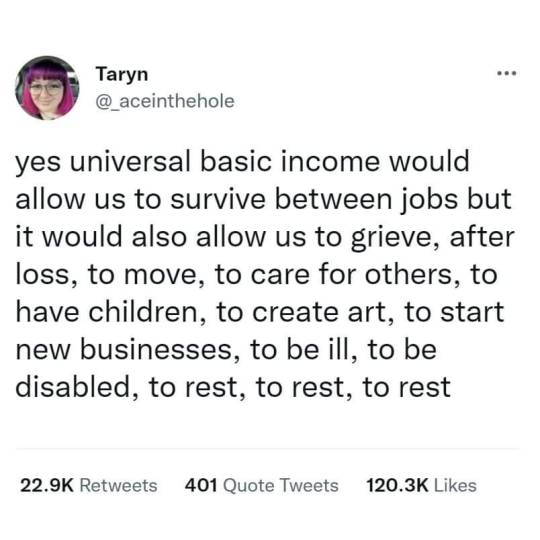#that are part of the agricultural value chain.
Explore tagged Tumblr posts
Text
"In some cities, as many as one in four office spaces are vacant. Some start-ups are giving them a second life – as indoor farms growing crops as varied as kale, cucumber and herbs.
Since its 1967 construction, Canada's "Calgary Tower", a 190m (623ft) concrete-and-steel observation tower in Calgary, Alberta, has been home to an observation deck, panoramic restaurants and souvenir shops. Last year, it welcomed a different kind of business: a fully functioning indoor farm.
Sprawling across 6,000sq m (65,000 sq ft), the farm, which produces dozens of crops including strawberries, kale and cucumber, is a striking example of the search for city-grown food. But it's hardly alone. From Japan to Singapore to Dubai, vertical indoor farms – where crops can be grown in climate-controlled environments with hydroponics, aquaponics or aeroponics techniques – have been popping up around the world.
While indoor farming had been on the rise for years, a watershed moment came during the Covid-19 pandemic, when disruptions to the food supply chain underscored the need for local solutions. In 2021, $6bn (£4.8bn) in vertical farming deals were registered globally – the peak year for vertical farming investment. As the global economy entered its post-pandemic phase, some high-profile startups like Fifth Season went out of business, and others including Planted Detroit and AeroFarms running into a period of financial difficulty. Some commentators questioned whether a "vertical farming bubble" had popped.
But a new, post-pandemic trend may give the sector a boost. In countries including Canada and Australia, landlords are struggling to fill vacant office spaces as companies embrace remote and hybrid work. In the US, the office vacancy rate is more than 20%.
"Vertical farms may prove to be a cost-effective way to fill in vacant office buildings," says Warren Seay, Jr, a real estate finance partner in the Washington DC offices of US law firm ArentFox Schiff, who authored an article on urban farm reconversions.

There are other reasons for the interest in urban farms, too. Though supply chains have largely recovered post-Covid-19, other global shocks, including climate change, geopolitical turmoil and farmers' strikes, mean that they continue to be vulnerable – driving more cities to look for local food production options...
Thanks to artificial light and controlled temperatures, offices are proving surprisingly good environments for indoor agriculture, spurring some companies to convert part of their facilities into small farms. Since 2022, Australia's start-up Greenspace has worked with clients like Deloitte and Commonwealth Bank to turn "dead zones", like the space between lifts and meeting rooms, into 2m (6ft) tall hydroponic cabinets growing leafy greens.
On top of being adaptable to indoor farm operations, vacant office buildings offer the advantage of proximity to final consumers.
In a former paper storage warehouse in Arlington, about a mile outside of Washington DC, Jacqueline Potter and the team at Area 2 Farms are growing over 180 organic varieties of lettuce, greens, root vegetables, herbs and micro-greens. By serving consumers 10 miles away or less, the company has driven down transport costs and associated greenhouse emissions.
This also frees the team up to grow other types of food that can be hard to find elsewhere – such as edible flower species like buzz buttons and nasturtium. "Most crops are now selected to be grown because of their ability to withstand a 1,500-mile journey," Potter says, referring to the average distance covered by crops in the US before reaching customers. "In our farm, we can select crops for other properties like their nutritional value or taste."
Overall, vertical farms have the potential to outperform regular farms on several environmental sustainability metrics like water usage, says Evan Fraser, professor of geography at the University of Guelph in Ontario, Canada and the director of the Arell Food Institute, a research centre on sustainable food production. Most indoor farms report using a tiny fraction of the water that outdoor farms use. Indoor farms also report greater output per square mile than regular farms.
Energy use, however, is the "Achilles heel" of this sector, says Fraser: vertical farms need a lot of electricity to run lighting and ventilation systems, smart sensors and automated harvesting technologies. But if energy is sourced from renewable sources, they can outperform regular farms on this metric too, he says.
Because of variations in operational setup, it is hard to make a general assessment of the environmental, social and economic sustainability of indoor farms, says Jiangxiao Qiu, a landscape ecologist at the University of Florida and author of a study on urban agriculture's role in sustainability. Still, he agrees with Fraser: in general, urban indoor farms have higher crop yield per square foot, greater water and nutrient-use efficiency, better resistance to pests and shorter distance to market. Downsides include high energy use due to lighting, ventilation and air conditioning.
They face other challenges, too. As Seay notes, zoning laws often do not allow for agricultural activity within urban areas (although some cities like Arlington, Virginia, and Cincinnati, Ohio, have recently updated zoning to allow indoor farms). And, for now, indoor farms have limited crop range. It is hard to produce staple crops like wheat, corn or rice indoors, says Fraser. Aside from leafy greens, most indoor facilities cannot yet produce other types of crops at scale.
But as long as the post-pandemic trends of remote work and corporate downsizing will last, indoor farms may keep popping up in cities around the world, Seay says.
"One thing cities dislike more than anything is unused spaces that don't drive economic growth," he says. "If indoor farm conversions in cities like Arlington prove successful, others may follow suit.""
-via BBC, January 27, 2025
1K notes
·
View notes
Text
I wonder if the slowdown of growth in rich countries is largely just poor countries catching up.
Everyone wants to industrialise, but at the end of the day someone has to do the agriculture, so as the global population becomes more educated, and infrastructure improves so that everyone has access to industrial jobs, the wages in agriculture have to increase to keep up. But this applies for moving from manufacturing into white collar jobs too. The amount of surplus captured by the earlier parts of the value chain should increase as countries develop, meaning higher wages for poor countries and lower wages than the counterfactual in rich countries. And this seems to be happening with agricultural wages at least.
This is an uncharacteristically optimistic view for me because it means the slowdown is a) a good thing, and doesn't represent a failure of productivity and b) it's temporary, as when poorer countries are more caught up, the value capture of different sectors will shift less.
96 notes
·
View notes
Text

Ohsama Sentai King-Ohger Photo Book: ~King of Kings~

Gira Husty Profile: King of Shugoddam, the most powerful country where the guardian god resides. Learning of king Racules Husty's goal of "prioritizing the unity of Chikyu, even at the expense of the people," he rebels against the world by playing the role of an "evil king" in order to protect everyone. His partner is God Kuwagata, and he arms himself with the KuwagataOhger armor.


Yanma Gast Profile: King of N'kosopa, country of technology. Born in a slum, he rose to the position of king with just his computer. He's a skilled engineer, and all of the equipment for the Royal Sentai was developed by Yanma. He's an ambitious man with a desire to improve, with many people looking up to and calling him "President" due to his yankii spirit.


Hymeno Ran Profile: Queen of Ishabana, country of fine art and medicine. While beautiful in appearance, she has an extremely selfish personality, and values "beauty" above all else. On the other hand, she has no hesitation in saving someone's life, and has the face of a doctor who brilliantly saves lives. She maintains a "selfish style" in battle, not caring about her surroundings, and fights using the King's Weapon: Scythe Mode.


Rita Kaniska Profile: King of Gokkan, country of ice and snow, they're the Chief International Judge who believes that neutrality is justice. They're always reserved and cautious, and don't show emotion, so they're often seen as a stubborn person……but, they actually have a compassionate side……? At the climax of the battle, they face the enemy with a cool style of "remaining immovable," unaffected by anything.


Kaguragi Dybowski Profile: Lord of Toufu, an agricultural country. He's always smiling and has a gentle and friendly personality. However, the truth is he's willing to use dirty tricks to protect his country, and has exceptional negotiating techniques to get things done to work to his advantage. He's concerned about his younger sister Suzume, who married Shugoddam's Racules.


Jeramie Brasieri Profile: Born to a father who was the sixth hero that saved mankind 2,000 years ago and a mother who was a Bugnarak, he has passed down the history of Chikyu for a long time as the "storyteller." His right arm is that of a Bugnarak, and he has a special ability to create strong webs from inside his body. His existence stirs up both the kings and Bugnarak, using words and actions that are difficult to read.







Racules Husty Profile: As king of Shugoddam, he united the five kingdoms with his unparalleled and overwhelming charisma, but was defeated in trial by combat with his brother Gira, and was dethroned as king. While Gira and the others were away from Chikyu, he became the king of Shugoddam and ruled the country as Shugo Mask……






Ohsama Sentai King-Ohger: Costume Guide The gorgeous costumes of the kings, which are reminiscent of the characteristics of each country. A guide to the current costumes and accessories worn by the characters since the beginning of the story.
Gira Husty (Top) Costume of Gira, who replaced Racules as king of Shugoddam. The cape remains the same, but the costume and boots underneath have changed!
(Middle) His recognizable oversized shirt and the bright red harness that highlight it. Red and black straps cross over the wide collar.
(Bottom) The brown boots were worn by Gira as he escaped during the beginning of the story. The necklace is designed with five pieces of red glass.
Yanma Gast (Top Right) Costume from the start of the new chapter two years later. The jacket has a design with a black belt hanging down. The cuffs have a zipper that can be opened and closed.
(Top Left) The wide pants are designed to be divided into upper and lower parts above the knee. The inner one has two lines on the front part. The color blue is used strikingly throughout.
(Middle) The cuff earring has ridges that grow alongside the ear, two chains, and N'kosopa's "King's Proof." The headphones have a cord connected to a switch.
(Bottom) Items that Yanma wears on his arms. The design of the shoes are silver with blue accents. They also have decorations that resemble headphones.
Kaguragi Dybowski (Top) A luxurious and gorgeous costume that just screams, "I'm the lord of Toufu!" The sleeves of the haori have a distinct pattern on both the front and back. The beehive like patterns are also a key point.
(Bottom) The footwear seen under his kimono are boots. Furthermore, the soles are shaped to be like geta.

Hymeno Ran (Top) From the new chapter, the shape of the sleeves and skirt have changed, and the large ribbon on the back is also one of its main features. The asymmetrical skirt produces cuteness and elegance. The tiara contains the "King's Proof."
(Middle Top) The previous costume was made up of a top, skirt, and corset. The skirt has volume, with the front being short and the back being long. The corset is laced up at the back.
(Middle Bottom) The sequin encrusted tights are the same design throughout the entire story. Also, the glittering shoes made entirely of gold are one of Hymeno's signature items.
(Bottom) Hymeno's Favorite Accessories: Hymeno has a large number of accessories, including earrings, necklaces, and bracelets, which among them she'll use at random. This is the commitment to beauty!
Rita Kaniska (Top Right) From the new chapter, Rita's clothes changed to a shorter length jacket. The metallic purple collar accentuates the black base color of the outfit.
(Top Left) The previous costume was a tailcoat type of long jacket. The black cloth is decorated with snowflake like patterns. The design of the purple collar and cuffs are the same as the costume for the new chapter.
(Bottom Left) The black gloves are one of the most distinctive features of Rita's costume. The bracelet decorated in the center has Gokkan's "King's Proof." There's a similar emblem on the cuff earring.
(Bottom Right) Rita is characterized by their all black outfit. Their knee length long boots are of course, also all black.
Jeramie Brasieri From the new chapter, an elegant cape has been added to Jeramie's costume. In the previous costume, his right arm had a longer sleeve. The top is asymmetrical with the left side being longer.



Handwritten Messages Check out the handwritten comments from the cast!
Sakai Taisei (Gira Husty)
"What do you respect about Gira, the character you play?" The fact that he tries to understand people's feelings!!
"If you were a king, what kind of country would you want to build?" A country where children can eat until they're full!!
"What do you think is the best part of Gira's costume?" The cape he got from his big brother!!
"Please give a message to Gira!" I want you to be happy!
"Please give a message to the king cast members!" I'm going to rule the world!!
"Finally, a message to the fans of King-Ohger!" You guys are the gears~ ^_^
Watanabe Aoto (Yanma Gast)
"What do you respect about Yanma, the character you play?" His sense of distance and respect for people.
"If you were a king, what kind of country would you want to build?" A country where the youth are the driving force.
"What do you think is the best part of Yanma's costume?" The sandals that I literally ran in for a whole year.
"Please give a message to Yanma!" I'm on top!!
"Please give a message to the king cast members!" Thank you for the past year!!
"Finally, a message to the fans of King-Ohger!" Thank you so much for your support. Now, you can also be a Royal Sentai.
Murakami Erica (Hymeno Ran)
"What do you respect about Hymeno, the character you play?" Her inner strength 💛
"If you were a king, what kind of country would you want to build?" A country without war.
"What do you think is the best part of Hymeno's costume?" The asymmetrical design!
"Please give a message to Hymeno!" I'm encouraged by your nobility!
"Please give a message to the king cast members!" Thank you all for making this past year so enjoyable. Really, thank you so much 💛
"Finally, a message to the fans of King-Ohger!" Filming for King-Ohger has finished, but we'll live on in everyone's hearts! Thank you so much for your support!!
Hirakawa Yuzuki (Rita Kaniska)
"What do you respect about Rita, the character you play?" The part where they never waver.
"If you were a king, what kind of country would you want to build?" A country where many different languages are spoken.
"What do you think is the best part of Rita's costume?" The chain attached to the jacket.
"Please give a message to Rita!" You've got humanity and are cute :)
"Please give a message to the king cast members!" We're family! Thank you so much for the past year!
"Finally, a message to the fans of King-Ohger!" Thank you so much for loving King-Ohger so much!
Kaku So (Kaguragi Dybowski)
"What do you respect about Kaguragi, the character you play?" That he'll dirty himself for the sake of others.
"If you were a king, what kind of country would you want to build?" Protein supplied.
"What do you think is the best part of Kaguragi's costume?" The emotions (design) on the sleeves.
"Please give a message to Kaguragi!" Be selfish every once in awhile.
"Please give a message to the king cast members!" Thank you all so much, we're family forever.
"Finally, a message to the fans of King-Ohger!" Thank you so much for your support. Let's meet again soon!!
Ikeda Masashi (Jeramie Brasieri)
"What do you respect about Jeramie, the character you play?" His vocabulary.
"If you were a king, what kind of country would you want to build?" Peaceful World.
"What do you think is the best part of Jeramie's costume?" It gives off the feeling of a prince.
"Please give a message to Jeramie!" Thanks ^_^
"Please give a message to the king cast members!" I was really happy with the six of us!
"Finally, a message to the fans of King-Ohger!" Thank you for all the love and good dreams.
#ohsama sentai kingohger#kingohger#super sentai#gira husty#yanma gast#hymeno ran#himeno ran#rita kaniska#kaguragi dybowski#jeramie brasieri#racules husty#racles husty#tokusatsu#toku cast#kingohger cast#my scans#my translation#king of kings pb#ohsama sentai king ohger#king ohger#if you repost elsewhere don't use japanese tags#these are the pages from “chapter 1”#and also the handwritten messages from chapter 2#chapter 2 has all the interviews + regular cool clothes#they'll be in a future post
380 notes
·
View notes
Note
Hello! I have a vegan cooking dilemma. I'm a baker professionally and a vegetarian. I'm trying to incorporate more vegan meals into my diet, but using locally-produced whole ingredients like butter, eggs, cheeses, and milk is something I really value, and I notice that lots of vegan baking doesn't seem able to avoid using very processed substitutes (e.g. vegan butter, vegan cheese) with basically untraceable supply chains. I'm open to the solution just being that I have to bake less in a personal capacity and experiment with other kinds of cooking, but I'd love to know your thoughts—I don't want my efforts to live more ethically to disconnect me from my local food scene, but I'm struggling to find vegan baking ingredients that don't cause that to an extent. Is this something you have advice navigating?
(Would-be vegan baker continued) I'm lucky here to live in an area where there's lots of agriculture, so I'm already using locally-grown and produced flours, vegetable oil, fruits, honeys, and so on in my baking. I'm just struggling to find or make substitutes for animal fats that don't involve spending lots of money with corporations totally divorced from the rest of my food landscape :(
It would be helpful if you told me a little more about what kinds of things you'd like to bake! Off the top of my head, I can't actually think of a single recipe that would be impossible to make without store-bought margarine or vegan cheese.
Muffins, cookies, most cakes:
The egg is being used for binding and a little bit of leavening. Replace one egg with 2 Tbsp water + 1 Tbsp vegetable oil + 2 tsp baking powder.
Meringues:
(Or any cake where you're whipping air into 4 or more eggs as a significant part of building structure)
You can make your own aquafaba (the soaking / cooking liquid from chickpeas) for this purpose if you have a source for dried chickpeas.
Pie crusts and other pastry shells:
Make an oil crust. Vegetable oil or refined coconut oil will work for this purpose.
Vegan cheese:
You can make your own cultured 'cheese' out of cashews or almonds, and probiotic capsules. If you don't want to buy probiotic capsules, you can make your own starter culture out of wheat berries.
If recipes are using store-bought substitutes for eggs and butter, it's likely for reasons of quickness / convenience—it probably isn't because the recipe author doesn't see a way to avoid it. Vegan bakers have been getting by without these pre-fab solutions for a long time!
40 notes
·
View notes
Text

Excerpt from this story from the New York Times:
Agriculture Secretary Tom Vilsack has a line about the state of small-scale agriculture in America these days.
It’s drawn from the National Agricultural Statistics Service, which shows that as the average size of farms has risen, the nation had lost 544,000 of them since 1981.
“That’s every farm today that exists in North Dakota and South Dakota, added to those in Wisconsin and Minnesota, added to those in Nebraska and Colorado, added to those in Oklahoma and Missouri,” Mr. Vilsack told a conference in Washington this spring. “Are we as a country OK with it?”
Even though the United States continues to produce more food on fewer acres, Mr. Vilsack worries that the loss of small farmers has weakened rural economies, and he wants to stop the bleeding. Unlike his last turn in the same job, under former President Barack Obama, this time his department is able to spend billions of dollars in subsidies and incentives passed under three major laws since 2021 — including the biggest investment in conservation programs in U.S. history.
The plan in a nutshell: Multiply and improve revenue streams to bolster farm balance sheets. Rather than just selling crops and livestock, farms of the future could also sell carbon credits, waste products and renewable energy.
“Instead of the farm getting one check, they potentially could get four checks,” Mr. Vilsack said in an interview. He is also helping schools, hospitals and other institutions to buy food grown locally, and investors to build meatpacking plants and other processing facilities to free farmers from powerful middlemen.
But it’s far from clear whether new policies and a cash infusion will be enough to counteract the forces that have pushed farmers off the land for decades — especially since much of the money is aimed at reducing carbon emissions, and so will also go toward large farming operations because they are the biggest polluters.
The number of farms has been declining since the 1930s, in large part because of migration from rural areas to cities and greater mechanization of agriculture, which allowed operators to cultivate larger tracts with fewer people. Over time, the federal government abandoned a policy of managing production to support prices, prompting growers to become more export-oriented while local distribution networks atrophied.
The last half-decade has been more disruptive than most. First came a trade war against China under former President Donald J. Trump, which drew retaliatory tariffs that cut into U.S. exports of farm products like soybeans and pork. Then came the pandemic, which scrambled supply chains and sapped farm labor, leaving crops to rot in the fields.
After Congress cushioned the blow with relief for farmers hurt by pandemic disruptions, things started to turn around. Even as the cost of supplies like fertilizer and seed rose, so did food prices, and farm incomes increased. In 2023, default rates on farm loans neared record lows.
“Farm balance sheets are the healthiest they’ve ever been in the aggregate,” said Brad Nordholm, the chief executive of Farmer Mac, a large secondary market for agricultural credit. “The tools available to American farmers to have a more predictable return, even when commodity prices change and input prices change, is greater than it’s ever been before.”
But wholesale crop prices are expected to decline over the coming year. Rising interest rates have made it more difficult to finance planting and harvesting, borrow for an expansion or just get into agriculture — especially since land values jumped 29 percent from 2020 to 2023.
That’s especially true for the smallest farmers, who are far less likely to be tapped into Department of Agriculture assistance programs and are more vulnerable to adverse weather, labor shortages and consumer whims.
“I think in some ways they’re in a worse position than before the pandemic,” said Benneth Phelps, executive director of the nonprofit Carrot Project, which advises small farmers in New England. “We see a lot of farmers making hard decisions right now about whether to stay in or get out, because they’ve run out of steam.”
That’s where the American Rescue Plan, the Inflation Reduction Act and the Bipartisan Infrastructure Law come in.
The laws have collectively provided about $60 billion to the Agriculture Department, which has parceled it out across a variety of priorities, from relieving farmers’ debt to paying them to reduce their carbon emissions.
The biggest chunk — about $19.5 billion — has breathed new life into subsidies to encourage conservation practices that improve the land, like cutting back on plowing and planting cover crops to sequester carbon in the soil. Some of the programs had shrunk in successive Farm Bills, which are five-year legislative packages that covers most agricultural subsidies, and about two-thirds of farmers who applied each year got nothing.
The new funding has added 16,000 recipients over the past two years. Preliminary data shows the expansion is allowing smaller farms to take part.
3 notes
·
View notes
Quote
THE MACHINERY—THE ACTUAL FORM AND FUNCTION—of twenty-first-century capitalism is an extractive circuit which quite literally crisscrosses the world. Its global value chains stretch through physical infrastructure and “frictionless” financial flows at the speed allowed by fossil fuels; telecommunications; and geophysical, technological, psychosocial, and bodily limits and “optimizations.” It connects economically and ecologically dispossessed agricultural communities in the Global South with regimes of hyperwork in the Global North; rare earth “sacrifice zones” with refugees; migrant labor with social reproduction; ocean acidification and atmospheric carbon with profitable opportunity. It has required the transformation of states; it has ripped through biomes and through flesh. Capital often appears and is treated as a historical abstraction; this is doubly true of globalized, financialized capital. The extractive circuit is the leaden reality of a global human ecological niche organized for maximal profitability—no matter how difficult or costly to maintain. Its realities underscore the generalization of a colonial social relation in socioecological terms, even as older modes of imperialism and neocolonialism are hardly swept aside. Its speed, frenzy, coercion, and brutality reach into the very heart of the imperial metropole, far beyond where such relations were already present. Feelings of exhaustion—depression, desperation, fatigue, exasperation—course through its wirings, neurons, biochemicals, and sinews. At every “node” along such a circuit, “inputs”—ecological, political, social, individual—are extracted and “exhausted.” The circuit, like capital, crosses boundaries without entirely obliterating them, and, similarly, connects a vast potential political subject across disparate lines—Global North and South, gender, class, race, nationality, religion, and sexuality. The extractive circuit is the socioecological portrait of capitalism historically and its transformations to maintain profitability in the face of immanent headwinds, like the long economic downturn and ecological limits themselves. Just as Marx once invited us to look behind the factory door—above which was inscribed “No admittance except on business”—to understand the way in which a nascent industrial capitalism was creating value, we need to “unbox” the extractive circuit, catalog its parts, and pry past a few bezels if we want to see Actually Existing Capitalism today.
The Extractive Circuit | Ajay Singh Chaudhary
10 notes
·
View notes
Text
ATTENTION ALL PASSENGERS. WILFORD INDUSTRIES WISHES YOU A GOOD MORNING. THE TEMPERATURE OUTSIDE IS -119.6 DEGREES CELSIUS. WELCOME ABOARD SNOWPIERCER.

THE ENGINE.
located at the front of the train, the engine room provides all power to the train, and is driven by a team of engineers that rotate with shift patterns. day shifts require two engineers in control of the train, and at night, there's only one. cabins are located by the engine, with the lead engineer having their own small living area and bed in the side of the wall. the other engineers bunk together in a communal cabin.
FIRST CLASS.
first class have the most freedom, esteemed and prided on its luxury. it is comprised of old-world billionaires. they eat plentifully, with fine-dining and silver service, reproduce at will, and spend more time complaining about trivia than anything else. it contains all salvaged art from the old world, including van gogh's sunflowers series, the kiss by gustav klimpt, and the girl with the pearl earring by johannes vermeer. they have access to an aquarium and sushi bar, the hospitality car, the dining car, sauna, and bowling alley, along with other grand luxuries. during resource struggles, such as electricity, heat, and water, first are never implicated.
HOSPITALITY CAR.
the hospitality car contains an intercom where the head of hospitality can speak throughout the train. it is unclear if this sits in first or second class.
SECOND CLASS.
second class is comprised of skilled workers, and offers comfortable accommodation. it has its own hospital clinic cars and recovery rooms, and contains the twelve drawers cars, housing criminals suspended with a medicinal form of kronole (illicit drug). it was originally made so that if snowpiercer collapsed, four hundred pre-selected people could be suspended in sleep to give humanity a fighting chance in the future. this is a last resort. more recently, it's been used to inanimate criminals such as murderers. second class is rarely implicated in resource issues, and has enough food to sustain its passengers, without the luxuries offered to first class.
THE NIGHTCAR.
the night car sits in the last car in second class. it was originally deisgned by wilford as a brothel, but meIanie and miss audrey pushed for it to act as a place where people can come to terms with their trauma, grief, and agony following the freeze. it offers cabaert entertainment, hosts events such as fightnight, plays, concerts, and dances. the nightcar is often revered as switzerland, as it remains impartial to class struggles and allows people to move between second and third class.
THIRD CLASS.
third class makes up half of the train and accounts for 70% of the population. it houses industry, cargo, residential bunks for jackboots (militay) and brakemen (police), and supplies the train with its agricultural needs. it has butchers, farmers, and food processing stations within it. the residential section is small, valuing efficiency in its space. the mess hall car is open around the clock, and third class residents work three shifts of eight hours over night. classroom and utility cars are seen in third class. there is a hospital clinic in third class too. food processing and paper-making are located in the back of third, along with storage and cargo cars. the chains is a car for communal living. agriculture (ag-sec) contains the most important parts of the train: they grow crops using hydroponics, such as cotton, wheat, cocoa, berries, potatoes, vegetables, fruits, and sugar cane. they have cars for pigs, goats, poultry, sheep, and cattle. they use every part of the animal, including the manure and methane, and harvest bovine cultures for scientific advancement and genetics testing. third is where protein bars are produced for the tail, which are protein-rich black jelly, mostly made of ground bugs and specifically cockroaches, which are then rationed out to the stowaways in the tail. aquaculture cars produce fish and seafood. fish waste is used as a fertiliser for the hydroponics. there is an apiary car (closed down after a bee colony collapse), and refrigeration car where the food is stored before distribution. the sanitation cars compost organic waste, such as corpses and manure, into fertiliser using bugs and worms. this is usually a job undertaken by people from the tail. when resources are tight, third suffer the effects of it, such as limited electricity and food rationing, despite housing the cars that make this possible for the rest of the train.
THE TAIL.
the tail contains mostly cargo cars. this is made up of stowaways that forced their way onto the train during departure, and are non-ticketed passengers. people from the tail, dubbed tailies, live solely in poverty, with their accommodations being likened to slums, and suffer hugely due to overcrowding and overpopulation. reproduction is not a right in the tail, and no tailies have been born in over five years. brakemen give the tailies rations in the form of protein bars, and they are extremely limited in terms of access. when resource issues come to light, the tail suffers the most, losing electricity, heat, food, and water, and are left to deal with the fallout themselves. deaths are common in the tail, and at any hint of rebellion, they are punished inhumanely.
5 notes
·
View notes
Text
Checks by state bodies in the past month have found markups on food prices of more than 90 per cent, as well as numerous cases of unfair trade practices, it was announced at a March 2 news conference by Bulgarian caretaker government ministers and other officials.
Caretaker Agriculture Minister Yavor Gechev told the news conference that annual food price inflation in January 2023 was 24.5 per cent on an annual basis, after a peak of 26.1 per cent in November.
Gechev said that there were very large margins between wholesale and retail prices.
Having read out examples of items such as yellow cheese, eggs, butter and cucumbers, Gechev said that the margins for some products – such as dairy products – were “inexplicable and even widening”.
This raised suspicions of “extremely high, unjustified high prices”.
The inspections were carried out by the Consumer Protection Commission (CPC), Bulgarian Food Safety Agency and the National Revenue Agency.
Caretaker Deputy Prime Minister Hristo Alexiev said: “We are not declaring war on the retail chains, nor do we want to wage such a war”.
The state had no intention of intervening in the food market, he said.
“The only thing we want to do is to protect the interests of consumers, of vulnerable groups and to make sure that excess profits are not generated on the backs of the population,”Alexiev said.
The CPC inspections had found 452 violations in the course of 471 inspections.
CPC head Stoil Alipiev told the news conference that the most common unfair trade practices included fake “today only at this price” or false “lowest price” claims; discrepancies between the price on the label and the price at the till; customers being lured to supermarkets by promotional prices for products advertised in brochures but on arrival, customers finding that the products were not there; discrepancies in the weight of products; and false labelling of products as Bulgarian when they came, for example, from Turkey.
The 333 inspections by the Bulgarian Food Safety Agency found 32 violations, while the National Revenue Agency took part in 340 inspections and issued 71 penalties.
Alexiev said that the pricing checks would continue, with the aim of setting up permanent monitoring.
“Currently, the inflation curve is going down and this is clearly visible. The food curve is going up. This makes us take all these measures,” he said.
Caretaker Economy and Industry Minister Nikola Stoyanov said that he had held talks with representatives of all along the chain from producers to retailers, and “every participant in the chain blames the others” while no accepted blame.
“There is no logic why the Bulgarian citizen pays such high prices,” Stoyanov said.
Earlier, in an interview with bTV on March 2, Nikola Vulkov, the head of the Association of Modern Trade – which represents major supermarket chains in Bulgaria – said: “The consumer basket in our country is about 30 per cent cheaper than the average for the EU’.
According to Vulkov, one of the reasons why some goods cost less in other countries is that value-added tax on food was lower there.
“There will always be individual goods that at some point in different countries can be found at lower prices. This does not mean that the consumer basket in our country is more expensive,” he said.
4 notes
·
View notes
Photo
It’s worth pointing out that there are two concerns with UBI:
One, is that people who get it will stop working. The most recent study on this I’ve seen does actually show a mild decline in work hours (that’s probably a feature, not a bug). It’s not overall concerning, but it absolutely has shown some dip on overall productivity, so the economic concerns are at least real there. Again — that is arguably the point, but arguing there won’t be a drop in productivity is inaccurate. Drops in productivity can be meaningful if they mean less of a necessary supply (agriculture, medicine, etc).
Two, and this one is the most concerning, is inflation. Economics are really, really complicated, but one pretty sure thing is that when you dump a bunch of money into people’s pockets en masse, prices will go up to match that reality. PPP loans and stimulus checks during Covid are likely a big part of the reason prices and inflation went up. Yes, there were other issues (price gouging, supply chain issues), but in actuality, giving everyone more money doesn’t give them higher buying power — it just raises prices. Giving everyone more money is a sure way to cause inflation. UBI pilots tend to be very small, and they mostly just show that if some limited amount of people get more money, things will be better for them personally. But that doesn’t mean that if everyone gets it, the same will be true. Everything will go up. The baseline costs will just rise along with the supply of money.
I’d argue, pretty strongly, that outside of limited tax credits, UBI isn’t the best idea. Rather than UBI, you want a few big things:
1. Subsidized healthcare. People stay in jobs, especially in America, because your ability to pay for healthcare is usually directly contingent on your job. Lose your job? Lose your healthcare. People cannot afford that, so they are stuck. No reasonable UBI would cover these costs. Doctors, nurses, and hospitals all provide a service, and the government pays for that benefit through taxes.
2. Universal child care. Child care is extraordinarily expensive (one child in NYC is an average of $20k a year!). Many parents choose to either have one parent stay home (meaning they lose an income, and usually the income increase that parent would have gotten over time) or they are paying a big portion of their income towards child care and losing out on spending time with their child. A universal child care system (just like our K-12 school system) would help parents leave jobs for different jobs without needing to find, for example, an employer that provides child care on site. If you left your job, you’d have the time and ability to find a new one without worrying about your child being safe.
3. Build a fuckton of new housing. You can’t afford your rent because there simply aren’t enough places to live, at least in most high population cities. So that rent bill gets sky high due strictly to very basic supply and demand. This is almost entirely determined by the market, and by property taxes. Your property is taxed on its estimated assessed value, not on what rent you are charging. If demand goes up, and suddenly every apartment in your building is going for $4k a month, you’re going to be expected to pay taxes on that value, even if you only charge $2K for rent. Those taxes are what pay for your public benefits like school, and we can’t really afford to lose them. How do we fix that? Increase supply! Places like Austin are doing this and seeing great results. The government doesn’t care if they’re bringing property taxes on two $2k/month apts or one $4k/month apt.
4. Give government agencies the ability to truly enforce antitrust and price gouging violations. There are genuine bad actors out there who use situations like the pandemic to raise prices and maximize profit. Empower the government to actually investigate and enforce rules around price gouging, antitrust violations, and other actions corporations take to maximize profits to the point where they negatively affect people. Note though, that corporations must actually make a profit to exist. So “corporation continued to make a profit during Covid” is not actually a bad thing for anyone. “Corporation quadrupled their profit margin for a full three years during and after Covid”, on the other hand, is a big warning sign unless that company happened to be Zoom or a pharmaceutical company. Likewise, government enforcement over utilities monopolies, etc, can go a long way towards limiting negative impacts for the average renter/owner.
Systems theory is where it’s at, here. Our economy is a highly complicated system, and thinking through impacts is necessary. Where does the UBI come from, if people are off making art they can’t sell and not paying taxes? If they’re taking lots of time off for family, or to grieve? I mean this honestly. Who is paying for that? We cannot make money from nothing, it has to come from somewhere or your entire economy crashes and your dollar has no value. And no, the answer isn’t just “tax the rich” because there is not unlimited wealth. You could drain every billionaire in America dry (even considering that billionaires aren’t liquid and mostly own stocks in their own and other companies that go up and down with the value of those companies AND that stock only has value if there is someone else to buy it) and it would barely cover a few years of a smaller UBI.
The U.S. has about 345 million Americans. A monthly $500 UBI would cost over $2 trillion dollars annually. That is an enormous amount of money, and because it isn’t taxed, it’s money that doesn’t support any subsidized system.
Simple seeming solutions can seem really nice and clean, but actual governmental policy is incredibly complicated in large part because all our systems are immensely complicated.
This post was way longer than I intended, but I’m going to end it with this: back in 9th grade, many eons ago now for me, my history teacher told us all a story about how Americans spent a ton of money developing a pen that would work in space. The Russians, on the other hand, gave their astronauts pencils! This was shared like Americans were just dummies who never thought to use a pencil.
Well, it turns out, pencils break! And guess what’s worse than spending a bunch of money developing space pens? How about having little pieces of poisonous lead flying around endangering astronauts and getting into sensitive electronics equipment?
Usually, if a simple answer has been passed on a bunch of times, it’s not because nobody has thought of it before. It’s because there was probably a pretty good reason why experts said “probably not the best idea”.

UBI needs to happen. via antiwork
180K notes
·
View notes
Text
Products Canada Imports from India: A Comprehensive Guide
Canada and India share a strong trade relationship, with imports from India playing a significant role in supporting Canada’s economy. From pharmaceutical products to machinery and textiles, India exports a diverse range of goods to Canada, contributing to its industrial and consumer needs. In this article, we will explore the top products imported from India to Canada, their economic significance, and key insights into importing goods from India to Canada.

Overview of Canada’s Imports from India
According to the United Nations Commerce Database on International Trade, Canada imported $5.58 billion worth of goods from India in 2023. While the United States, China, Mexico, and Germany remain Canada’s top import partners, India is also a crucial player in supplying essential goods.
Key Import Figures (2023-24):
Pharmaceutical products – US$ 425.33 million
Machinery, nuclear reactors, boilers – US$ 283.28 million
Articles of iron or steel – US$ 246.21 million
Electrical and electronic equipment – US$ 242.11 million
Pearls, precious stones, metals, coins – US$ 186.83 million
Organic chemicals – US$ 179.86 million
Optical, photo, technical, and medical apparatus – US$ 116.52 million
Rubbers – US$ 115.35 million
Plastics – US$ 113.82 million
Coffee, tea, mate, and spices – US$ 80.21 million
Top Products Imported from India to Canada
1. Pharmaceutical Products
India is known as the “pharmacy of the world” due to its cost-effective and high-quality pharmaceutical production. In 2023-24, Canada imported pharmaceutical products worth US$ 425.33 million from India. These imports ensure affordable healthcare access and innovative treatments for Canadians.
2. Machinery, Nuclear Reactors, and Boilers
Canada imports industrial machinery, reactors, and boilers from India to meet its growing infrastructure and manufacturing needs. The trade volume for these items stood at US$ 283.28 million in 2023-24.
3. Articles of Iron or Steel
Steel and iron products, including construction materials, tools, and machinery parts, are heavily imported from India, amounting to US$ 246.21 million. These materials support Canada’s construction and industrial sectors.
4. Electrical and Electronic Equipment
Canada relies on India for US$ 242.11 million worth of electrical and electronic equipment, including industrial automation systems, semiconductors, and consumer electronics.
5. Pearls, Precious Stones, and Metals
Gems and metals are widely imported from India to cater to Canada’s jewelry, electronics, and industrial applications. The total import value in this category reached US$ 186.83 million.
6. Organic Chemicals
India exports US$ 179.86 million worth of organic chemicals to Canada, which are used in the pharmaceutical, chemical, and agricultural industries.
7. Optical, Photo, Technical, and Medical Apparatus
Medical equipment and diagnostic tools are essential imports, improving healthcare infrastructure in Canada. Imports from India in this category totaled US$ 116.52 million.
8. Rubber and Plastic Products
Rubber and plastic imports, worth US$ 115.35 million and US$ 113.82 million respectively, are crucial for Canada’s automotive, packaging, and industrial applications.
9. Coffee, Tea, Mate, and Spices
Indian tea, coffee, and spices enjoy significant demand in Canada. Imports in this category reached US$ 80.21 million, highlighting the cultural influence of Indian food products.
Why Canada Imports from India
India’s diverse and cost-effective manufacturing base makes it an attractive trade partner for Canada. Here are some reasons behind Canada’s increasing imports from India:
Competitive pricing: Indian manufacturers offer high-quality products at competitive rates.
Diverse product range: India supplies a variety of goods, from pharmaceuticals to industrial machinery.
Reliable supply chain: India has a robust trade network that ensures seamless export operations.
Strategic trade policies: Canada and India share trade agreements that facilitate smooth imports.
How to Import from India to Canada: A Step-by-Step Guide
If you are a business owner or entrepreneur looking to start importing goods from India to Canada, follow these steps:
1. Create a Business Plan
A well-structured business plan helps in identifying target markets, suitable products, and regulatory requirements.
2. Choose a Warehouse
Selecting a secure and strategically located warehouse ensures efficient storage and distribution of imported goods.
3. Obtain Necessary Licenses and Permits
Ensure compliance with Canadian import regulations by acquiring licenses such as:
Business Identification Number (BIN)
Importer-Exporter Code (IEC)
GSTIN (Goods and Services Tax Identification Number)
Product-specific certifications
4. Find Reliable Indian Suppliers
Using platforms like Export Import Data and India Export Import Data, businesses can connect with reputable Indian exporters.
5. Clearance and Inspection
Once the goods arrive in Canada, they must go through customs clearance, where authorities inspect and approve the shipment after necessary duties and taxes are paid.
Top Canadian Importers of Indian Products
Several Canadian businesses import goods from India. Some of the top importers include:
20/20 Accessory Source Ltd.
Amazon.com.ca, Inc.
Canadian Tire Corporation Limited
First Chemical Limited
Belkin, Inc.
Globe Commercial Products Inc.
MPS Canada Co.
Sephora Beauty Canada, Inc.
For a complete list of importers in Canada, businesses can access Export Import Data platforms.
Final Thoughts
The list of export items from India to Canada reflects a strong trade relationship that continues to grow. From pharmaceuticals to textiles and machinery, India plays a crucial role in Canada’s import market.
For businesses looking to explore opportunities in importing clothes from India to Canada or any other goods, reliable data sources like exportimportdata provide valuable insights into trade trends and supplier connections.
Strengthening trade relations will not only benefit both economies but also create more opportunities for exporters and importers alike. Whether you are a startup, SME, or large corporation, understanding Canada’s import market is essential for business success.
0 notes
Text
"In a historic step toward the first-ever restoration of the tiger population to a nation where they were once extinct, two captive Siberian tigers have been translocated from Anna Paulowna Sanctuary, Netherlands, to the Ile-Balkhash Nature Reserve in Kazakhstan.
This remarkable event is part of an ambitious program led by the Government of Kazakhstan with support from WWF and the UN Development Program to restore the Ile-Balkhash delta ecosystem and reintroduce tigers to the country and region, where the species has been extinct for over 70 years.
“It is a high priority for Kazakhstan to work on the restoration of rare species. For ecological value it is important that our biodiversity chain is restored. And that the tiger that once lived in this area is reintroduced here,” said Daniyar Turgambayev, Vice-minister of the Ministry of Ecology and Natural Resources of Kazakhstan.
In the early 21st century, genetic studies were carried out on bones and furs held in national collections which revealed that the population of tigers living between Iran, southern Russia, Central Asia, and the areas around the Caspian Sea was extremely similar to Siberian tigers.
This led scientists to conclude that Felis vigrata, the former name of the Caspian tiger, was simply the Siberian tiger that developed into a distinct population, but not a new subspecies, over generations of being separated by habitat fragmentation.
Bodhana and Kuma, the male and female tigers, will be housed in a spacious semi-natural enclosure of three hectares [7.4 acres] within the Ile-Balkhash Nature Reserve. Any of their offspring will be released into the wild and will become the first tigers to roam Kazakhstan in decades, and potentially the first-ever international tiger reintroduction.
They will play an important role in the establishment of a new tiger population in the region where they had previously been wiped out as a result of excessive hunting.
“Today marks a monumental conservation milestone to bring tigers back to Kazakhstan and Central Asia,” said Stuart Chapman Leader of WWF Tigers Alive. “This tiger translocation is a critical step to not only bring back the big cat to its historic homeland but also to rewild an entire ecosystem.”
Progress towards restoration of the area is already well underway with recovering and reintroduction of critical tiger prey species like the Kulan (Asiatic wild ass), and reforestation of over 120 acres with native trees. Being the apex predator, tigers will play a significant role in sustaining the structure and function of the ecosystem on which both humans and wildlife rely...
“With the launch of the tiger reintroduction program, we have witnessed a significant change—the revival of nature and our village of Karoi,” said Adilbaev Zhasar, the head of the local community group Auyldastar.
“This project not only restores lost ecosystems, but also fills us with pride in participating in a historic process. Because of small grants from WWF, we have the opportunity to do what we love, develop small businesses, and create jobs in the village, which brings joy and confidence in the future.”
From the very beginning, the local community around Ile-Balkhash Nature Reserve has been closely involved in the project. This includes support for improved agricultural techniques and the future development of nature tourism in the area.
The translocation of these tigers is the first of several planned in the coming years, with a goal to build a healthy population of about 50 wild tigers by 2035, starting with this pioneering pair for breeding. This initiative is not only a testament to the resilience of the species but also a powerful example of governments, conservation organizations, and local communities cooperating in wildlife and nature conservation."
-via Good News Network, November 27, 2024
#tiger#tigers#big cats#wild cats#kazakhstan#asia#central asia#biodiversity#endangered species#conservation#rewilding#wildlife conservation#ecology#nature reserve#good news#hope
2K notes
·
View notes
Text
Flower Seeds Market Regional and Global Industry Insights to 2033
The global flower seeds market is experiencing robust growth, driven by increasing interest in gardening, landscaping, and the aesthetic appeal of ornamental plants. As of 2023, the market was valued at approximately USD XX billion and is projected to reach USD XX billion by 2032, growing at a compound annual growth rate (CAGR) of XX% during the forecast period. This article delves into the industry trends, market segmentation, regional insights, and future forecasts shaping the flower seeds market up to 2032.
Market Overview
Flower seeds are the reproductive units of flowering plants, enabling the propagation of various floral species. They play a pivotal role in horticulture, agriculture, and the floriculture industry, serving both aesthetic and commercial purposes. The market encompasses a wide range of seeds, including annuals, perennials, and biennials, catering to diverse consumer preferences and climatic conditions.
Download a Free Sample Report:- https://tinyurl.com/4xctputf
Key Market Drivers
Rising Popularity of Gardening and Landscaping: The surge in home gardening and urban landscaping projects has significantly increased the demand for flower seeds. Individuals and communities are investing in green spaces for recreation, environmental benefits, and aesthetic enhancement.
Urbanization and Green Space Development: Rapid urbanization has led to the development of public parks, vertical gardens, and rooftop gardens, necessitating a steady supply of flower seeds for beautification and ecological balance.
Growing Floriculture Industry: The floriculture sector, encompassing the cultivation of flowering and ornamental plants, relies heavily on quality flower seeds. The industry's expansion, driven by events, festivals, and increasing consumer disposable income, propels market growth.
Environmental and Ecological Awareness: A heightened awareness of environmental conservation has encouraged the planting of native and pollinator-friendly flowers, boosting the demand for specific flower seeds that support biodiversity.
Technological Advancements in Seed Production: Innovations in seed technology, including the development of hybrid and genetically modified seeds with enhanced traits such as disease resistance and prolonged blooming periods, have attracted both commercial growers and hobbyists.
Market Segmentation
The flower seeds market can be segmented based on type, application, trait, and distribution channel:
By Type:
Annual Flower Seeds: Plants that complete their life cycle within a year, popular for their vibrant and diverse blooms.
Perennial Flower Seeds: Plants that live for multiple years, offering sustained beauty and requiring less frequent replanting.
Biennial Flower Seeds: Plants that require two years to complete their life cycle, often valued for their unique flowering patterns.
By Application:
Residential Gardening: Use in home gardens, balconies, and indoor plantings for personal enjoyment and decoration.
Commercial Landscaping: Utilization in designing and maintaining public and private landscapes, including parks, corporate campuses, and urban green spaces.
Floriculture Production: Cultivation for the cut flower industry, nurseries, and plant retailers.
By Trait:
Hybrid Seeds: Engineered for specific characteristics such as color, size, and resilience, often resulting in superior performance.
Open-Pollinated Varieties: Seeds that are pollinated naturally, preserving genetic diversity and allowing gardeners to save seeds for future planting.
By Distribution Channel:
Online Retailers: E-commerce platforms offering a wide variety of seeds with the convenience of home delivery.
Garden Centers and Nurseries: Specialized stores providing seeds along with gardening supplies and expert advice.
Home Improvement Stores: Retail chains supplying seeds as part of a broader range of home and garden products.
Direct Sales: Purchases made directly from seed producers or through catalogs.
Regional Insights
Europe: Dominates the flower seeds market, holding a significant share due to a long-standing tradition of gardening and horticulture. The region accounted for approximately 57.75% of the market share in 2024. citeturn0search0 Countries like the Netherlands, Germany, and the United Kingdom are key contributors, with well-established floriculture industries and consumer enthusiasm for ornamental plants.
North America: Exhibits substantial market growth, driven by the popularity of home gardening, community beautification projects, and a strong emphasis on sustainable landscaping practices. The United States and Canada are leading markets, with a growing trend towards native plant cultivation and pollinator-friendly gardens.
Asia Pacific: Anticipated to experience the highest growth rate during the forecast period, fueled by increasing urbanization, rising disposable incomes, and a burgeoning middle class with an interest in gardening. Countries such as China, India, and Japan are witnessing a surge in demand for flower seeds, both for residential and commercial applications.
Latin America and Middle East & Africa: Emerging markets with growing interest in horticulture and landscaping. Economic development and urban planning initiatives are contributing to the expansion of green spaces, thereby increasing the demand for flower seeds.
Competitive Landscape
The flower seeds market is characterized by the presence of several key players focusing on product innovation, quality enhancement, and strategic partnerships to strengthen their market position. Notable companies include:
Sakata Seed Corporation: A leading player known for its extensive range of flower seeds, emphasizing research and development to introduce new and improved varieties.
Syngenta Flowers: Specializes in breeding and marketing a wide array of flower seeds, catering to both professional growers and home gardeners.
PanAmerican Seed: Offers a diverse selection of flower seeds, focusing on high-quality genetics and innovative breeding techniques.
Benary Samenzucht: Renowned for its premium flower seeds
Conclusion
The global flower seeds market is poised for steady growth, driven by increasing interest in home gardening, urban landscaping, and the expansion of the floriculture industry. The rising awareness of environmental conservation and biodiversity preservation has further fueled the demand for flower seeds, particularly for native and pollinator-friendly species.
Technological advancements in seed breeding, including hybrid and genetically enhanced varieties, have improved the quality, resilience, and aesthetic appeal of flowers, making them more attractive to both hobbyists and commercial growers. Furthermore, the convenience of online retail channels and the expansion of gardening communities have facilitated easier access to a wide range of flower seeds.
With Europe leading the market and regions like Asia Pacific experiencing rapid growth, the industry is expected to witness continued expansion through 2032. As consumer preferences evolve and sustainability becomes a key focus, companies investing in innovation, quality, and eco-friendly solutions will emerge as market leaders. The future of the flower seeds market remains promising, offering abundant opportunities for both established players and new entrants.
Read Full Report:-https://www.uniprismmarketresearch.com/verticals/agriculture/flower-seeds.html
0 notes
Text
A Comprehensive Guide to Sourcing High-Quality Soybeans in India
Introduction to Soybeans in India
Soybeans are one of the most significant crops in India's agricultural landscape. Used in everything from food production to animal feed, their versatility makes them highly sought after. However, finding reliable Soyabeans Dealers in India can be challenging due to variations in quality, supply consistency, and pricing.

In this article, we will explore everything you need to know about soybeans, including their nutritional benefits, market demand, sourcing challenges, and how to select the best suppliers for your needs.
Understanding Soybeans: Nutrition and Uses
Nutritional Benefits of Soybeans
Soybeans are a powerhouse of nutrition, packed with essential nutrients such as:
High-quality protein – Ideal for vegetarians and vegans.
Rich in fiber – Supports digestive health.
Good source of Omega-3 fatty acids – Promotes heart health.
Loaded with essential vitamins and minerals – Including iron, calcium, and magnesium.
Major Uses of Soybeans
Soybeans are widely used in multiple industries, including:
Food Processing – Tofu, soy milk, soy flour, and soy protein isolates.
Animal Feed – A crucial component of livestock nutrition.
Industrial Uses – Biodiesel production and lubricants.
The growing demand for plant-based proteins has made soybeans a key agricultural commodity in India.
Challenges in Finding Reliable Soybean Suppliers in India
1. Inconsistent Quality
Not all suppliers maintain high standards in soybean sourcing. Variations in size, color, and moisture content can affect quality.
2. Supply Chain Issues
Many suppliers struggle with on-time delivery due to logistics and inventory management challenges.
3. Lack of Certifications
Without proper certifications, soybean quality can be questionable, leading to lower market value and reduced buyer confidence.
4. Price Fluctuations
Seasonal changes, export demands, and production levels often affect pricing, making it essential to choose suppliers who offer stable pricing models.
Key Features of a Trustworthy Soybean Dealer
A reliable soyabeans dealer in India should have:
Certifications ensuring quality standards (e.g., FSSAI, Organic Certification).
Transparent trade practices with traceable sourcing.
Consistent supply and efficient logistics to prevent delays.
Choosing an established supplier ensures that businesses receive high-quality soybeans that meet their specific requirements.
Exploring the Role of Soybeans Dealers in India
How Dealers Contribute to the Supply Chain
Soyabeans Dealers in India play a crucial role in bridging the gap between farmers and businesses. They manage:
Procurement from local and international farms.
Quality assessment and processing.
Distribution to food processors, wholesalers, and exporters.
The Impact on India’s Agricultural Economy
With the increasing reliance on soybeans for various applications, efficient trade practices contribute significantly to India’s agro-based economy.
The Rise of Pulses and Beans in India’s Food Industry
Soybeans are just one part of India’s vast pulses and beans market. The demand for Pulses Brand in India is rising due to growing health consciousness and dietary changes.

The Role of Pulses in Nutrition
Pulses such as chickpeas, lentils, and kidney beans provide:
High protein and fiber content.
Essential micronutrients for overall health.
As one of the best pulses suppliers in India, a trusted brand ensures quality, affordability, and availability across regions.
Sustainability in Soybean Farming and Supply Chain
Eco-Friendly Farming Methods
Leading suppliers are adopting:
Reduced pesticide usage.
Crop rotation techniques to enhance soil health.
Efficient Logistics for Lower Carbon Footprint
A strong supply chain reduces transportation emissions, making soybean trade more sustainable.
How to Choose the Right Supplier for Your Business
When selecting a soybean or pulses supplier, businesses should consider:
Certifications – Ensuring quality compliance.
Customer Reviews – Checking supplier reputation.
Supply Capacity – Ensuring availability for bulk orders.
Conclusion
Sourcing high-quality soybeans is crucial for businesses in food processing, agriculture, and industry. With trusted soyabeans dealers in India, businesses can ensure consistent supply, quality assurance, and competitive pricing.
By understanding market trends, certification standards, and sustainability practices, buyers can make informed decisions and build long-term partnerships with reputable suppliers.
FAQs
1. What are the main uses of soybeans in India?
Soybeans are used in food products (tofu, soy milk), animal feed, and industrial applications.
2. How can I ensure the quality of pulses and beans?
Check for certifications, supplier reputation, and quality control measures.
3. What factors determine a good soybeans dealer in India?
A reliable dealer maintains quality consistency, certifications, and a robust supply chain.
4. Why is certification important for pulses and beans brands?
Certifications ensure that the products meet safety, hygiene, and quality standards.
5. How is sustainability impacting the soybean trade?
Eco-friendly farming and efficient logistics are making soybean production more sustainable. For more information Visit Here:- https://www.valencyagro.com/blog
0 notes
Text
Navigating the Evolving Sustainability Landscape
Keith Bearden, CEO of Alter Eco, shared perspectives from the Sustainable Foods Summit
Keith Bearden, CEO of Alter Eco, recently attended the Sustainable Foods Summit North America, an influential gathering dedicated to advancing sustainability in the food industry, held this year in San Francisco, CA, in January.
Hosted as part of the Sustainable Foods Summit series, the event brings together leaders from natural and organic food sectors to tackle some of the industry's most pressing challenges. From the evolution of eco-labeling to the promise of regenerative agriculture, upcycled foods, and circular economies, the summit serves as a platform for meaningful discussions and actionable solutions.
For Bearden, the Summit was an opportunity to explore innovations that align with his company Alter Eco’s mission to restore ecosystems, improve livelihoods, and reduce waste. Alter Eco is a sustainable food company known for its organic, Fair Trade-certified chocolate, granola, and quinoa, all crafted with a commitment to regenerative agriculture, carbon neutrality, and ethical sourcing. As the leader of a company that champions these values, Bearden left the summit inspired and equipped with new insights on how to amplify the positive impact of sustainable practices in the industry.
In this exclusive Q&A, Bearden reflects on his key takeaways from the summit, shares how Alter Eco is navigating the evolving sustainability landscape, and offers advice for retailers and manufacturers committed to making a difference.
What motivated you to attend the Sustainability Summit, and what were your expectations going into the event?
Bearden: Given our commitment to sustainability, I'm always eager to learn of new initiatives and breakthroughs in regenerative farming, sustainable packaging, new regulations, etc. I also know that regenerative farming is maturing, and the definitions are solidifying so it was important for me to stay on top of these changes.
What was the most surprising or impactful insight you gained at the summit?
Bearden: I think the most surprising was some of the data that was shared regarding how we are "consuming" the planet. The data shared by the Global Footprint Network shows that our demand for ecological resources and services in a given year is more than the Earth can regenerate. In fact, the data actually showed that we are consuming 1.7 Earths every year.
AI's impact on sustainability was a hot topic at the event. What are your thoughts on how it will impact your business.
Bearden: There is absolutely no question that AI is going to impact everyone and especially businesses including Alter Eco. Some of the more innovative uses of AI that were discussed are how to trace and provide more transparency in the supply chain. Also with the new regulations taking effect in Europe around imports (specifically that imports of certain products cannot come from land that has been deforested), AI is going to be utilized to track the products and with the use of satellite technology, AI can interpret where the products came from and if the land is sustainably farmed.
The summit emphasized empowering farmers and workers in sustainable supply chains. What insights did you take away about the connection between ethical practices and sustainability goals?
Bearden: These goals are completely intertwined. It was pointed out numerous times that with many commodities, like cacao, skyrocketing in price, the farmers could short cut the sustainable practices and just sell their products to the highest bidder. Therefore, it's critical that companies like ours, not only pay a fair price and in most cases a premium, but also have to work with the farmers to convince them of the importance of sustainability and the impact on the planet.
What role do you think eco-labeling schemes, like organic and FairTrade certifications, play in driving consumer trust and advancing sustainable business models?
Bearden: There was a presentation from the USDA regarding organic labeling and they shared that 71% of consumers trust the label USDA Organic and will actually pay more for products labeled organic. They also shared that Fair Trade is similarly trustworthy but less than USDA Organic. However, during this conference, there was a significant amount of discussion on labeling associated regenerative. There is a lot of confusion and no real clarity even on the definition of Regenerative Agriculture. And as such, consumers don't have much trust or faith in these labels at this point. I believe this will change over time, but it will take education and emphasis on a consistent and understandable definition around regenerative and the impact it has on the world.
How do you see the future of sustainable food production evolving, and what role will innovation and collaboration play in accelerating these changes?
Bearden: As I pointed out earlier, we consume 1.7 earths per year. This definitely isn't sustainable. We have to turn this trend around to where we are not only consuming in a more conscious manner, but also that we are producing sustainably as opposed to destructively. Innovations like AI will help but at the end of the day, it's the farmers that have to be committed to these initiatives. It's the role of companies like Alter Eco to ensure that we work directly with the farmers to educate them, pay them a living wage and to emphasize the need for sustainable farming. It's also critical to keep the younger generations involved in farming to ensure a future food system. The average age of a cacao farmer in Latin America is 63. This in and of itself isn't sustainable so again, education, wages and collaboration are critically important to continue to feed the planet.
Balancing affordability with ethical and sustainable practices is a significant challenge. What lessons or strategies from the summit could help companies navigate this balance?
Bearden: The biggest lesson / strategy is that it is going to take LOTS of communication and education of the consumers to convince them that a product that comes from a regenerative farm, that's organic and Fair Trade is truly worth more than one that doesn't. As the manufacturers, we can't do it alone and, in some cases, we will need the government to step in and help lead these initiatives. But it will definitely require a constant drum beat on the impact that sustainable farming can have in providing food to feed the population while still maintaining a livable planet for future generations.
0 notes
Text
Solar Powered Cold Storage Market Analysis, Trends, Share 2025-2033

The Reports and Insights, a leading market research company, has recently releases report titled “Solar Powered Cold Storage Market: Global Industry Trends, Share, Size, Growth, Opportunity and Forecast 2025-2033.” The study provides a detailed analysis of the industry, including the global Solar Powered Cold Storage Market Analysis share, size, trends, and growth forecasts. The report also includes competitor and regional analysis and highlights the latest advancements in the market.
Report Highlights:
How big is the Solar Powered Cold Storage Market?
The global solar powered cold storage market was valued at US$ 5,563.4 Million in 2024 and is expected to register a CAGR of 11.4% over the forecast period and reach US$ 14,699.7 Million in 2033.
What are Solar Powered Cold Storage?
Solar-powered cold storage utilizes solar energy to power refrigeration or cold storage units. These systems convert sunlight into electricity through solar panels, which is then used to operate the refrigeration equipment. This technology is beneficial in areas with limited or unreliable access to electricity, particularly in off-grid or remote locations. Solar-powered cold storage is environmentally friendly, reducing dependence on fossil fuels and aiding in the fight against climate change. Moreover, these systems are cost-effective over time, relying on readily available solar energy for operation.
Request for a sample copy with detail analysis: https://www.reportsandinsights.com/sample-request/1577
What are the growth prospects and trends in the Solar Powered Cold Storage industry?
The solar-powered cold storage market growth is driven by various factors. The solar-powered cold storage market is expanding rapidly, propelled by rising demand for sustainable, off-grid refrigeration solutions. These systems are especially favored in areas with limited access to electricity, offering a reliable and eco-friendly alternative to conventional cold storage methods. Government incentives and regulations promoting renewable energy adoption are also driving market growth. Additionally, technological advancements, including increased efficiency and affordability of solar panels and storage batteries, are further boosting the market. Hence, all these factors contribute to solar-powered cold storage market growth.
What is included in market segmentation?
The report has segmented the market into the following categories:
By Technology:
Solar Photovoltaic Systems
Solar Thermal Systems
By Storage Capacity:
Small Scale (Below 1000 cubic feet)
Medium Scale (1000 - 5000 cubic feet)
Large Scale (Above 5000 cubic feet)
By Application:
Agriculture
Food & Beverage
Pharmaceuticals
Chemicals
Others
By End-Use:
Commercial
Industrial
Agricultural
Segmentation By Region:
North America:
United States
Canada
Asia Pacific:
China
India
Japan
Australia & New Zealand
Association of Southeast Asian Nations (ASEAN)
Rest of Asia Pacific
Europe:
Germany
The U.K.
France
Spain
Italy
Russia
Poland
BENELUX (Belgium, the Netherlands, Luxembourg)
NORDIC (Norway, Sweden, Finland, Denmark)
Rest of Europe
Latin America:
Brazil
Mexico
Argentina
Rest of Latin America
The Middle East & Africa:
Saudi Arabia
United Arab Emirates
South Africa
Egypt
Israel
Rest of MEA (Middle East & Africa)
Who are the key players operating in the industry?
The report covers the major market players including:
Bright Biomethane
Ecozen Solutions
Promethean Power Systems
ColdHubs
Enexor BioEnergy
Sure Chill
Dulas Ltd.
SolCool One
Cold Chain Technologies
Eco-Fridge
SunDanzer
View Full Report: https://www.reportsandinsights.com/report/Solar Powered Cold Storage-market
If you require any specific information that is not covered currently within the scope of the report, we will provide the same as a part of the customization.
About Us:
Reports and Insights consistently mееt international benchmarks in the market research industry and maintain a kееn focus on providing only the highest quality of reports and analysis outlooks across markets, industries, domains, sectors, and verticals. We have bееn catering to varying market nееds and do not compromise on quality and research efforts in our objective to deliver only the very best to our clients globally.
Our offerings include comprehensive market intelligence in the form of research reports, production cost reports, feasibility studies, and consulting services. Our team, which includes experienced researchers and analysts from various industries, is dedicated to providing high-quality data and insights to our clientele, ranging from small and medium businesses to Fortune 1000 corporations.
Contact Us:
Reports and Insights Business Research Pvt. Ltd. 1820 Avenue M, Brooklyn, NY, 11230, United States Contact No: +1-(347)-748-1518 Email: [email protected] Website: https://www.reportsandinsights.com/ Follow us on LinkedIn: https://www.linkedin.com/company/report-and-insights/ Follow us on twitter: https://twitter.com/ReportsandInsi1
#Solar Powered Cold Storage Market share#Solar Powered Cold Storage Market size#Solar Powered Cold Storage Market trends
0 notes